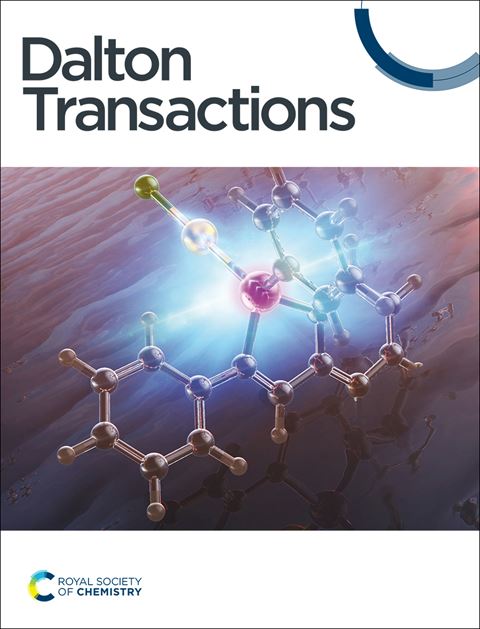Acceptorless oxidant-free dehydrogenation of amines catalyzed by Ru-hydride complexes of amide-acid/ester ligands
IF 3.5
3区 化学
Q2 CHEMISTRY, INORGANIC & NUCLEAR
引用次数: 0
Abstract
Traditional dehydrogenation of amines involves the transfer of hydrogen molecule(s) from a substrate to an acceptor. In acceptorless dehydrogenation, hydrogen gas is liberated without an oxidant, providing an efficient synthetic method. Acceptorless dehydrogenation of primary amines to nitriles without using an oxidant or hydrogen acceptor is significant yet challenging. Herein, we present efficient Ru-based catalysts capable of carrying out such a transformation with hydrogen gas as the only by-product. A new class of air and moisture-stable ruthenium-hydride complexes (1 – 4) of amide-acid/ester-based ligands have been synthesized and characterized. Crystal structures of two representative complexes, 2 and 3, illustrate the bidentate N-O coordination mode of the ligands. At the same time, additional binding sites are occupied by one hydride, one CO, and two PPh3 co-ligands. The catalytic behavior of these complexes is explored towards the oxidant-free, acceptorless, and selective dehydrogenation of primary and secondary amines affording nitriles and imines, respectively. Among four Ru(II) complexes, complex 2 showed the best catalytic activity for the dehydrogenation of amines. A wide variety of both primary and secondary amines were utilized to explore the substrate scope. The catalytic system tolerated both electron-withdrawing and electron-releasing substituents on amine substrates. Various control experiments and mechanistic studies were carried out to support the dehydrogenation of amines by using complex 2 as a representative catalyst.求助全文
约1分钟内获得全文
求助全文
来源期刊

Dalton Transactions
化学-无机化学与核化学
CiteScore
6.60
自引率
7.50%
发文量
1832
审稿时长
1.5 months
期刊介绍:
Dalton Transactions is a journal for all areas of inorganic chemistry, which encompasses the organometallic, bioinorganic and materials chemistry of the elements, with applications including synthesis, catalysis, energy conversion/storage, electrical devices and medicine. Dalton Transactions welcomes high-quality, original submissions in all of these areas and more, where the advancement of knowledge in inorganic chemistry is significant.
 求助内容:
求助内容: 应助结果提醒方式:
应助结果提醒方式:


